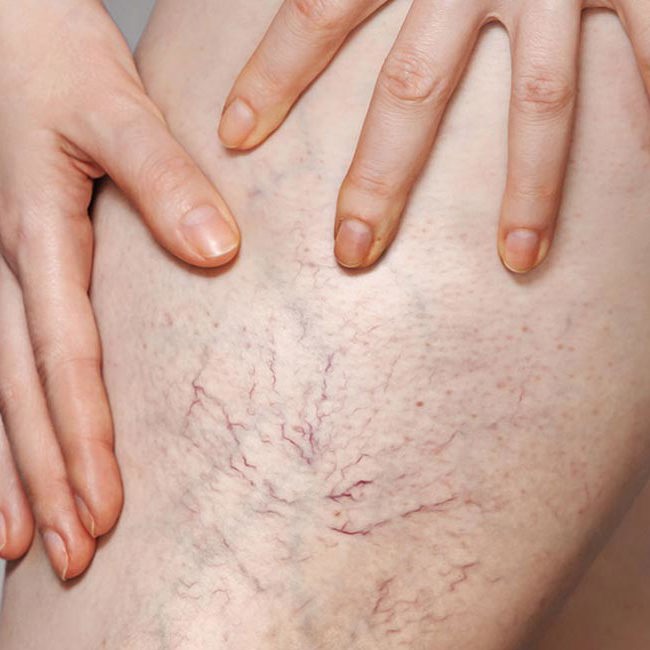Vascular Surgery
Gentle removal of varicose veins
&width=188&height=188&quality=70)
Vascular Surgery
Gentle removal of varicose veins
&width=188&height=188&quality=70)
Effective varicose vein removal by specialists
Varicose veins can cause swelling, restlessness in the legs, and cosmetic concerns. At Aleris, we offer modern and effective treatment focused on fast recovery.
What are varicose veins?
Varicose veins (also called varices) are enlarged, twisted, visible veins just under the skin, most often on the thighs and lower legs. Veins wider than 4 mm are considered true varicose veins.
What causes varicose veins?
Varicose veins occur when the small valves in the veins fail to function properly. Instead of directing blood upward toward the heart, the faulty valves allow blood to pool in the lower legs. This increases pressure and causes the veins to enlarge and twist.
Are varicose veins dangerous?
No, varicose veins are not dangerous and do not cause blood clots. However, they are often hereditary and can lead to discomfort or skin changes over time if left untreated.
Effective varicose vein removal by specialists
Varicose veins can cause swelling, restlessness in the legs, and cosmetic concerns. At Aleris, we offer modern and effective treatment focused on fast recovery.
What are varicose veins?
Varicose veins (also called varices) are enlarged, twisted, visible veins just under the skin, most often on the thighs and lower legs. Veins wider than 4 mm are considered true varicose veins.
What causes varicose veins?
Varicose veins occur when the small valves in the veins fail to function properly. Instead of directing blood upward toward the heart, the faulty valves allow blood to pool in the lower legs. This increases pressure and causes the veins to enlarge and twist.
Are varicose veins dangerous?
No, varicose veins are not dangerous and do not cause blood clots. However, they are often hereditary and can lead to discomfort or skin changes over time if left untreated.
Common symptoms of varicose veins:
- Aching or heaviness in the legs
- Swollen ankles
- Cramping, itching, or restlessness
- Cosmetic concerns
- Skin changes or brownish discoloration
- Eczema or, in severe cases, leg ulcers
When should you seek treatment?
Varicose veins often worsen over time if untreated. We recommend treatment if you experience:
- Significant cosmetic concerns
- Skin changes or ulcers
- Swelling around the ankles
- Frequent cramps or restlessness in the legs
Gentle varicose vein removal
In most cases, treatment is simple and nearly painless. At Aleris, we use gentle laser or foam treatments whenever possible, resulting in minimal post-op discomfort, quick recovery, and a faster return to normal activities.
Laser treatment delivers the best results but may not be suitable if the veins are highly twisted or lie close to the skin. In such cases, foam treatment is typically recommended.
For larger or more complex varicose veins, the surgeon removes the damaged vein through small incisions in the skin.
Gentle varicose vein removal
In most cases, treatment is simple and nearly painless. At Aleris, we use gentle laser or foam treatments whenever possible, resulting in minimal post-op discomfort, quick recovery, and a faster return to normal activities.
Laser treatment delivers the best results but may not be suitable if the veins are highly twisted or lie close to the skin. In such cases, foam treatment is typically recommended.
For larger or more complex varicose veins, the surgeon removes the damaged vein through small incisions in the skin.
